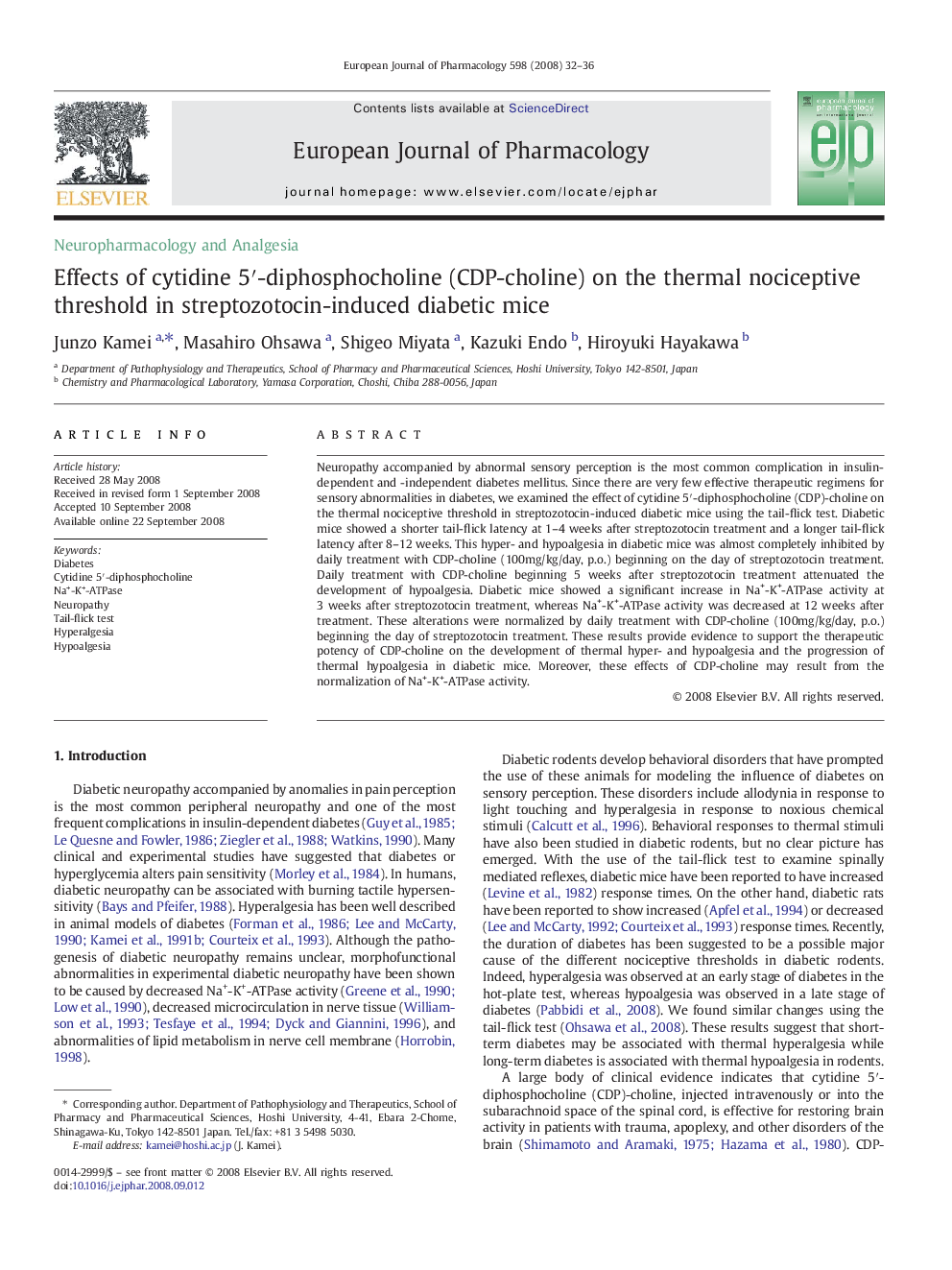| Article ID | Journal | Published Year | Pages | File Type |
|---|---|---|---|---|
| 2534725 | European Journal of Pharmacology | 2008 | 5 Pages |
Neuropathy accompanied by abnormal sensory perception is the most common complication in insulin-dependent and -independent diabetes mellitus. Since there are very few effective therapeutic regimens for sensory abnormalities in diabetes, we examined the effect of cytidine 5′-diphosphocholine (CDP)-choline on the thermal nociceptive threshold in streptozotocin-induced diabetic mice using the tail-flick test. Diabetic mice showed a shorter tail-flick latency at 1–4 weeks after streptozotocin treatment and a longer tail-flick latency after 8–12 weeks. This hyper- and hypoalgesia in diabetic mice was almost completely inhibited by daily treatment with CDP-choline (100mg/kg/day, p.o.) beginning on the day of streptozotocin treatment. Daily treatment with CDP-choline beginning 5 weeks after streptozotocin treatment attenuated the development of hypoalgesia. Diabetic mice showed a significant increase in Na+-K+-ATPase activity at 3 weeks after streptozotocin treatment, whereas Na+-K+-ATPase activity was decreased at 12 weeks after treatment. These alterations were normalized by daily treatment with CDP-choline (100mg/kg/day, p.o.) beginning the day of streptozotocin treatment. These results provide evidence to support the therapeutic potency of CDP-choline on the development of thermal hyper- and hypoalgesia and the progression of thermal hypoalgesia in diabetic mice. Moreover, these effects of CDP-choline may result from the normalization of Na+-K+-ATPase activity.
